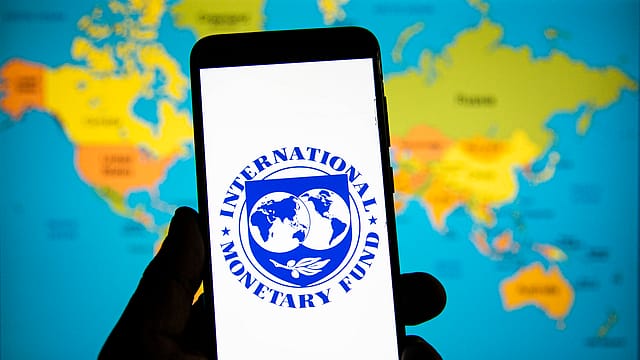India's digital journey highlights lessons for other countries: IMF Paper
ADVERTISEMENT

India's digitisation journey holds lessons for other countries, according to a latest paper published by the International Monetary Fund. Titled as 'Stacking up the Benefits: Lessons from India’s Digital Journey,' the paper says that the country has developed a world-class digital public infrastructure (DPI) to support its sustainable development goals.
DPI refers to a set of shared digital building blocks, such as applications, systems, and platforms, powered by interoperable open standards or specifications. India Stack is the collective name of a set of commonly used DPIs in India; it consists of three different layers—unique identity (Aadhaar), complimentary payments systems (Unified Payments Interface, Aadhaar Payments Bridge, Aadhaar Enabled Payment Service), and data exchange (DigiLocker and Account Aggregator).
"India’s foundational DPI, called India Stack, has been harnessed to foster innovation and competition, expand markets, close gaps in financial inclusion, boost government revenue collection and improve public expenditure efficiency. India’s journey in developing a world-class DPI highlights powerful lessons for other countries embarking on their own digital transformation, in particular a design approach that focuses on shared building blocks and supporting innovation across the ecosystem," the paper says.
January 2026
Netflix, which has been in India for a decade, has successfully struck a balance between high-class premium content and pricing that attracts a range of customers. Find out how the U.S. streaming giant evolved in India, plus an exclusive interview with CEO Ted Sarandos. Also read about the Best Investments for 2026, and how rising growth and easing inflation will come in handy for finance minister Nirmala Sitharaman as she prepares Budget 2026.
In terms of the DPI model in the healthcare system, according to the global organisation, the country through the Co-WIN app sped up Covid-19 vaccine distribution. "Using a digital backbone allowed India to scale its vaccine delivery quickly and overcome challenges such as large-scale internal migration. The technology underlying CoWIN has been deployed in Indonesia, Philippines, Sri Lanka and Jamaica to help facilitate their vaccination programs," the paper says.
In terms of the DPI model in financial institutions, the paper says that the Indian government played a catalytic role in acting as an anchor client and establishing institutions to ensure continuity in India's stack operations. "DPI is an example of a two-sided market where the value of the platform increases for both participants as the numbers on each side increase. By using the DPI to provide social benefits, the government encouraged take-up by individuals and gave service providers the comfort of access to a large client base," the paper says.
The government also promoted the use of technology as ‘utilities’ and created a category of not-for-profit companies with a public purpose (National Information Utilities), according to the paper.
"The National Payments Corporation of India, an initiative between the Reserve Bank of India and the Indian Banks Association, which unites and operates retail payments and settlement system, is an example of such a company. This is one strategy to strike a balance between curbing monopoly rents and providing these services effectively and efficiently, without the various human resources and procurement challenges that often plague large government projects. The tax administration also played a pioneering role in rolling out a tax ID (PAN) using an innovative PPP approach, from where important lessons were drawn to develop Aadhaar," the paper says.
However, the IMF paper says that certain features of India’s journey would be difficult to replicate elsewhere, but these are not preconditions for success. The paper also says that despite a robust digital stack, the country continues to reel with challenges such as digital literacy and the digital divide, which represent a barrier to engaging with DPI-based solutions. "A robust data protection framework is essential to protect citizens’ privacy, prevent companies and governments from indiscriminately collecting data, and holding companies and governments accountable for data breaches to incentivize appropriate data handling and adequate investments in cybersecurity. The DPI can also help support efforts to make social assistance more resilient and adaptable," the paper says.
